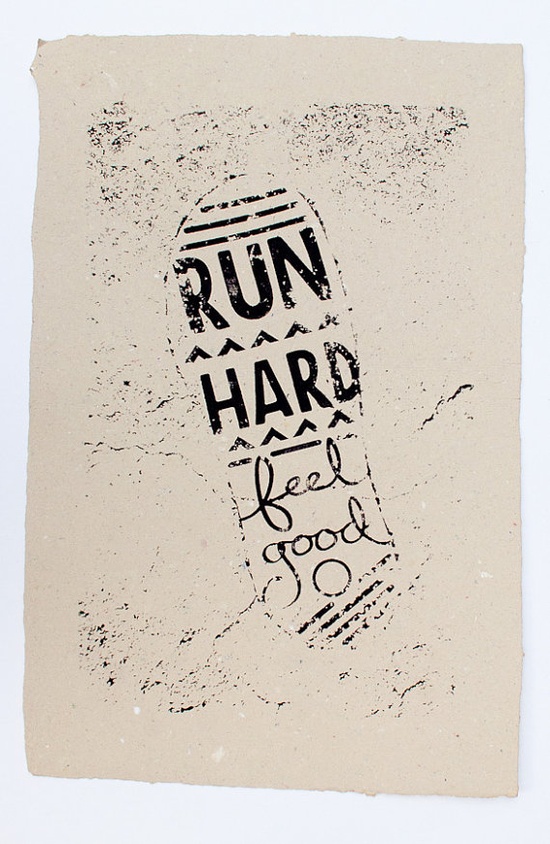Running for Rock Climbers: Interval Training
I’ve said numerous times that I am a climber, not a runner. Admittedly, I enjoy that predictable rhythm that comes from pounding the pavement on a crisp, sunny day. However, running simply gives me something healthy to do for my physical and mental health on days that I’m not climbing. So while I’m not one of those obligatory anti-runners looking at their watch every other step until they can cross “cardio” off of their daily to-do list, I do occasionally find myself in the doldrums of monotony somewhere around mile 2 (especially on beautiful spring days where I’d rather be climbing!) What helps me through these trips down Boredom Lane is Interval Training.
Interval Training: Alternating short, high intensity bursts of effort with slower, active recovery phases in a single workout.
Not only does it give you something to “do” while running to pass the time, intervals may even improve your climbing! By working both the aerobic (low intensity) and anaerobic (high intensity) energy-producing systems, your body will become more efficient at managing lactic acid build-up. And if you’ve ever been pumped out of your mind on a redpoint attempt, your forearms are already quite familiar with the role lactic acid can play in rock climbing. Also, if you’re trying to shed some poundage so you can crush on the steeps this spring, high intensity intervals burn significantly more calories than slow, continuous exercise.
Adding interval workouts to your running regimen is easy. There are 4 variables to consider – intensity and duration of the working interval, duration of the recovery interval, and repetitions for each interval. Here’s a few practical options that can be adapted for runners of varying abilities…
RUN/WALK: For new runners, this is a great way to build endurance. You will log a lot more quantity as well as quality “running minutes” training this way than you would by simply running as far as you can til exhaustion. Gradually increase your run time and decrease your walk time until you are able to run for the entire duration of your workout.
TIMED SPRINTS: Once you can run for 30 minutes or more without stopping, you’re ready for some sprints. Plug in some specifics to the variables listed above, and get ready to sweat! Track progress by measuring the number of minutes spent at maximum effort. For example, sprinting 30 seconds out of every 90 seconds in a 30 minute run means you end up with a whopping 10 minutes of work at full speed – not too shabby!
DISTANCE SPRINTS: Similar to Timed Sprints, only you’re running for a pre-determined distance instead of length of time. Aim for a certain percentage of your total distance to be at maximal effort. For example, give yourself one mile in which to sprint 3 tenths – some intervals could be one tenth long, and some could be less, but at the end of a 5 mile run, you will have run 1.5 miles at top speed!
LANDMARK SPRINTS: This one is for the right-brained folk among you that don’t want to be slave to a stopwatch. Pick some sort of landmark (mailboxes are EXCELLENT for this, telephone poles are great too!), and alternate between sprinting and running at sub-max. For example, sprint past 5 mailboxes, then jog past 3, etc. The best way to track progress is by looking at your ending time – as you get better and faster, you should cover the same distance in less time.
Start substituting one of your regular runs per week with an interval workout and I guarantee you will see gains in your fitness. Plus, with all that sprinting you won’t have a chance to get bored! However, if you’re like me, one of the more enjoyable parts about running is that I CAN let my mind wander, so don’t feel like every workout has to include high intensity work to be successful. Any other runners out there who enjoy interval training? Feel free to share your typical workout strategy…




8 Responses to “Running for Rock Climbers: Interval Training”
I’ve had tremendous success with interval training. It’s help me get faster very quickly! It’s also helped my body get used to pushing through exhaustion and fatigue (which helps with climbing).
Intervals hurt but they can take the monotony out of a work out and give you greater benefit in a shorter period of time.
Holly – You are the perfect illustration of the point I was trying to make! 🙂
Eric – Agreed, it’s hard to get bored when you’re focused on speed/time/distance/etc!
Nice post Erica! There’s a lot to intervals I’m discovering now I’ve quit climbing and gone back to my first love 6 days a week. I’m currently following a training plan from Jack Daniels which incorporates One Interval run per week e.g. 4x 5minutes at 6:45/mile with 4min jog recoveries in between, but it’s different every week. There is also a Tempo run (20-40minutes) at ‘comfortably hard pace’ – for me around 7:15/7:20, long run 5-10miles easy pace at the weekend (8:50ish miles) and the days in between are 3-4 mile easy recovery runs. It’s a great program and my goal is 3000m Steeplechase at the Southeast Masters track and field in May.
What you describe at the end with the mailboxes is Fartlek running (google it) invented by the Swedish I think and it’s great training.
Also Treadmillls… sometimes you have to get a run in and use a treadmill. I hate them, but that is where I find intervals most useful – if i’m switching up the pace on the treadmill all the time, I’m not thinking about inventive ways I can kill myself to end the monotony of the treadmill. Good luck! Keep those posts coming! David
I do alot of intervals on the rotating stairs machine. If you’re local to Cary, NC, Hemlock Bluffs Park has a great trail that’s a half mile loop, with two board walk sections interspersed with mulched, flat trail. It’s perfect for high speed intervals…walk the board walk and sprint the mulched trail. Way easier on the joints than pavement, and there’s no roots on that particular trail to trip you up when you’re funning full out. Plus the forest is very pretty.
David – I’m said that you quit climbing, but glad that you “still found love.” To each their own, right? Funny you mention the “tempo runs.” I find that sometimes my sprints turn into tempo runs, especially if I look at my time and realize I’m gonna break a PR – then it’s hard for me to want to slow down enough to fully recover from my sprints, which means it’s near impossible to sprint again….so it ends up just being one fairly hard pace. I’m familiar with the term “Fartlek” from my middle school days on the soccer field…I had a coach that would use the word REPEATEDLY at practice, which was always met with a bunch of 7th grader giggles 🙂
Rebecca – That sounds like a great plan. I so wish I had some trail options close by my house. We’ve got a lot of great trails for mountain biking, but I don’t trust my ankles to run on them!
I love interval training. In fact I love it so much I have to be careful not to overdo it especially as I’ve gotten older. I usually do 2 types. Fast and short with plenty of recovery so something like 4 to 6 200 meter runs in 38-40 seconds with a 400 meter easy jog recovery. This is a fun and not too stressful workout.
Then the other kind which it’s hard to explain why I enjoy since it really hurts. That would be 6×800 meters in 3:00 to 3:10 with a 400 meter jog recovery. By the last one I feel about ready to puke. Half an hour later though and I feel great and they do wonders for my fitness.
Nice article! I did a fair amount of sprint intervals training for high altitude alpine. 100 yard dashes with walk in between plus some of the longer ones described. Altitude is a different ballgame and the excellent cardio shape I was in may have backfired when the team was all feeling great and me especially when we decided to ascend a little faster than scheduled early in the trip. My body saw no need to adapt till we rested at 15Kft and then it responded with HAPE, sending me down by helicopter sadly. So, my advice is yes, do the intervals and enjoy them as much as possible, but if you’re going to altitude be cautious with acclimatizing. Lactic acid isn’t the only factor.